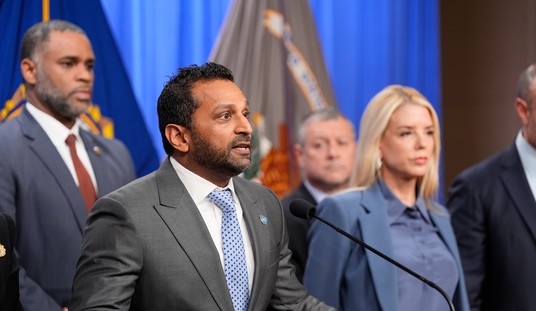It’s not what you think. Far from complaining that the women on Norway’s beach handball team reveal too much in their competition uniforms, their governing European agency fined them for revealing too little. The team rebelled against the requirement that women play in skimpy bikini briefs while the men are allowed to wear shorts in the sand.
Now they’re paying a fine, and starting a big debate over sexualization of female athletes:
The Norwegian women’s beach handball team has been fined for refusing to play in bikini bottoms during a game in the sport’s Euro 2021 tournament.
The team wore thigh-length elastic shorts during their bronze medal match against Spain in Bulgaria on Sunday to protest against the regulation bikini-bottom design that the sport’s Norwegian federation president called “embarrassing.”
The team was fined 1,500 euros total ($1,700) for “improper clothing,” according to a statement from the European Handball Association’s Disciplinary Commission.
While male players are allowed to play in tank tops and shorts no longer than 4 inches above the knee, women are required to wear midriff-baring tops and bikini bottoms “with a close fit and cut on an upward angle toward the top of the leg” and a maximum side width of 4 inches, according to International Handball Federation regulations.
The beach volleyball associations rescinded the bikini-bottom requirement nearly a decade ago in advance of the London Olympics. That change was prompted by accusations of cultural insensitivity, where the revealing uniform requirements might have kept some countries from competing in the sport. For some reason, however, the International Handball Federation has not made similar changes, even with the obvious disparity between uniforms between men and women and the lack of rational explanation for it. That left the EHF in the uncomfortable position of enforcing the policy and touching off a cultural firestorm.
For the record, this is the uniform that had been flagged as non-compliant:
View this post on Instagram
Other than the fact that the shorts aren’t bikini bottoms, what exactly is wrong with this uniform? It doesn’t confer any obvious competitive advantage, and certainly doesn’t appear to be materially different than the standard for men’s uniforms in the same sport. There aren’t any safety issues created by this design either, which bears a near-identical design to the shorts used by women’s indoor volleyball players at many levels. One has to assume it provides a little more physical comfort for the players, who won’t have to keep adjusting their uniforms to keep them in place, but that’s not exactly a competitive advantage.
It does have one clearer advantage: it’s somewhat less exploitive of the women wearing them, which might be the real reason the IHF and EHF object to them.
Norway’s sport and political leadership isn’t taking the fine quietly, while the EHF punted the issue back to its international committee:
“It’s completely ridiculous,” Norway’s Minister for Culture and Sports Abid Raja tweeted after Monday’s ruling. “What a change of attitude is needed in the macho and conservative international world of sport.”
Norwegian politician Lene Westgaard-Halle chided the IHF for the forced bikini rule, calling it “embarrassing, disgraceful and sexist.”
Ahead of the tournament, Norway asked the EHF for permission to play in shorts, but were told that breaches of the rules were punishable by fines.
They complied, until their last match.
“The EHF is committed to bring this topic forward in the interest of its member federations, however it must also be said that a change of the rules can only happen at IHF level,” EHF spokesman Andrew Barringer said in an email.
Perhaps the EHF could have acted as an advocate for change rather than a passive catalyst. Barringer isn’t exactly posing as a Profile In Courage here with this buck-passing statement. If teams want to play in bikini bottoms, they should have that option, but if the league wants women in those uniforms, then they should force the men to wear similar briefs as well or explain any rational reason to apply two very different requirements to their athletes. The IHF should have addressed this years ago, and their failure to do so will create an embarrassment that will only compound if they don’t act quickly to resolve it.








Join the conversation as a VIP Member